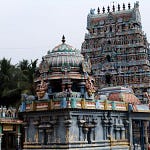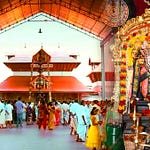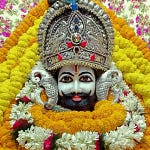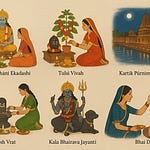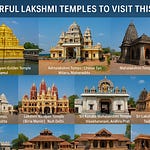The Shri Kodanda Rama Temple, located in Gollala Mamidada, a serene village near Rajahmundry in Andhra Pradesh, stands as a beacon of spirituality, architectural grandeur, and cultural heritage. This temple, dedicated to Lord Rama, is one of the most prominent Rama temples in South India, known for its towering gopuram, intricate sculptures, and deep-rooted religious significance.
In this article, we explore the history, origin, religious significance, architecture, rituals, and spiritual importance of this magnificent temple.
1. History and Origin of the Shri Kodanda Rama Temple
The foundation of the Shri Kodanda Rama Temple dates back to 1889, when the original structure was built to honor Lord Rama, Goddess Sita, and Lord Lakshmana. The temple underwent significant expansion in 1939, transforming it into a larger, more elaborate structure with its signature gopuram (temple tower).
Significance of the Temple’s Name
The name "Kodanda Rama" refers to Lord Rama holding the Kodanda (bow), symbolizing his readiness to uphold dharma (righteousness) and protect his devotees. The temple is a vital pilgrimage site for devotees of Lord Rama, particularly during major Hindu festivals like Rama Navami.
2. Religious Significance and Deities
The Shri Kodanda Rama Temple follows Vaishnavism, a major tradition of Hinduism that worships Lord Vishnu and his incarnations. Lord Rama, considered the seventh avatar of Vishnu, is the presiding deity of the temple.
Main Deities:
Lord Rama – The central deity, depicted with a bow, symbolizing his role as a warrior and protector.
Goddess Sita – The consort of Lord Rama, symbolizing devotion, virtue, and patience.
Lord Lakshmana – The younger brother of Rama, representing loyalty and duty.
Lord Hanuman – The devoted disciple of Rama, known for his unwavering faith and strength.
The temple is a spiritual hub for Rama Bhaktas (devotees of Lord Rama) and plays an important role in spreading the values of the Ramayana, devotion, and dharma.
3. Architectural Grandeur
One of the most captivating aspects of the Shri Kodanda Rama Temple is its remarkable Dravidian architecture, reflecting the grandeur of South Indian temple styles.
Key Architectural Highlights:
Towering Gopuram (Temple Entrance Tower)
The temple boasts a massive 200-feet-high, 11-story gopuram.
The gopuram is adorned with intricate carvings depicting scenes from the Ramayana, Mahabharata, and other Hindu scriptures.
The west-facing entrance is a rare feature, as most South Indian temples face east.
Temple Complex and Mandapams (Halls)
The main sanctum (garbha griha) houses the beautiful idols of Rama, Sita, and Lakshmana, sculpted with extraordinary detail.
The pillared halls (mandapams) feature finely carved stone pillars depicting mythological episodes.
Ornate Sculptures and Frescoes
The temple walls and ceilings are decorated with vivid frescoes and murals, showcasing stories from Valmiki’s Ramayana and Tulsidas’ Ramcharitmanas.
The sculptures inside the temple depict various incarnations of Vishnu, celestial beings, and divine stories.
Sacred Water Tank (Pushkarini)
The temple has a holy water tank, where devotees take ritual baths before offering prayers.
The waters are believed to possess spiritual cleansing properties.
4. Rituals, Festivals, and Religious Practices
The Shri Kodanda Rama Temple follows traditional Hindu rituals and daily worship ceremonies. Devotees flock to the temple to seek blessings, perform special poojas, and participate in spiritual discourses.
Daily Rituals:
Suprabhata Seva – Early morning prayers and awakening of the deities.
Abhishekam – Ritual bathing of the idols with holy water, milk, and honey.
Archana and Aarti – Offering of flowers, lamps, and chanting of Rama’s name.
Prasadam Distribution – Devotees receive sacred food (prasadam) as a divine blessing.
Major Festivals Celebrated at the Temple:
Rama Navami (Birth of Lord Rama)
Celebrated in March/April, the festival includes grand processions, spiritual discourses, and Ramayana recitals.
Thousands of devotees participate in Kalyanotsavam, the divine wedding ceremony of Rama and Sita.
Hanuman Jayanti (Birth of Lord Hanuman)
Devotees offer special prayers to Hanuman and recite Sundara Kanda, a significant section of the Ramayana.
Vaikunta Ekadashi (Sacred Day of Vishnu)
Observed in December-January, it marks the opening of the Vaikunta Dwaram (heavenly gateway), allowing devotees to pass through and seek salvation.
Deepavali (Diwali)
The temple is beautifully decorated with lamps and lights, symbolizing Lord Rama’s return to Ayodhya after defeating Ravana.
Ugadi (Telugu New Year)
Special prayers are conducted to mark the beginning of a new year.
The temple hosts regular bhajans (devotional singing), discourses, and spiritual events, fostering community participation and devotion.
5. The Spiritual and Cultural Impact
The Shri Kodanda Rama Temple is not just a place of worship but a spiritual hub that upholds the moral values of the Ramayana. The temple plays a crucial role in preserving Hindu traditions and promoting devotion to Lord Rama.
Spiritual Benefits:
Devotees believe that worshiping at this temple removes obstacles, brings peace, and fulfills desires.Community Engagement:
The temple conducts free food distribution (Annadanam), educational programs, and charity services for the underprivileged.Pilgrimage Destination:
Pilgrims from all over India visit this temple, making it a key religious landmark in Andhra Pradesh.
6. How to Reach Shri Kodanda Rama Temple
The temple is easily accessible from major cities like Rajahmundry and Kakinada.
By Air:
The nearest airport is Rajahmundry Airport (RJY), about 35 km from the temple.By Rail:
The closest railway station is Rajahmundry Railway Station, well-connected to major cities.By Road:
Regular buses and taxis are available from Rajahmundry, Kakinada, and Vijayawada.
The Shri Kodanda Rama Temple in Gollala Mamidada is a spiritual jewel that embodies devotion, art, and tradition. Its majestic gopuram, divine sanctity, and vibrant religious practices make it a must-visit for devotees and history enthusiasts alike.
For those seeking peace, divine blessings, and a glimpse into South India’s rich cultural heritage, this temple offers an unparalleled spiritual experience. Whether you visit for worship, history, or to marvel at its architectural beauty, the Shri Kodanda Rama Temple is a place that resonates with faith, serenity, and timeless devotion.
Would you like to plan a visit or explore more temples with similar historical significance? 🚩




